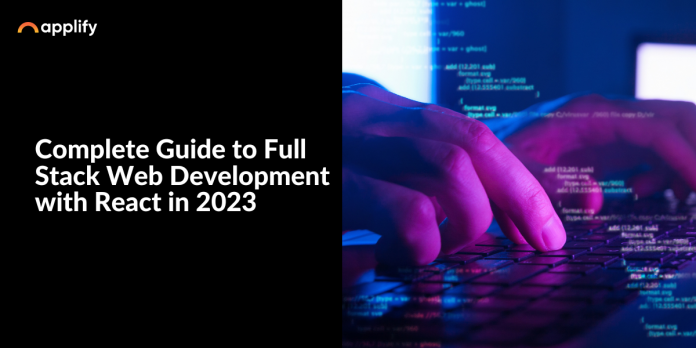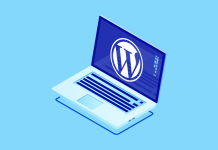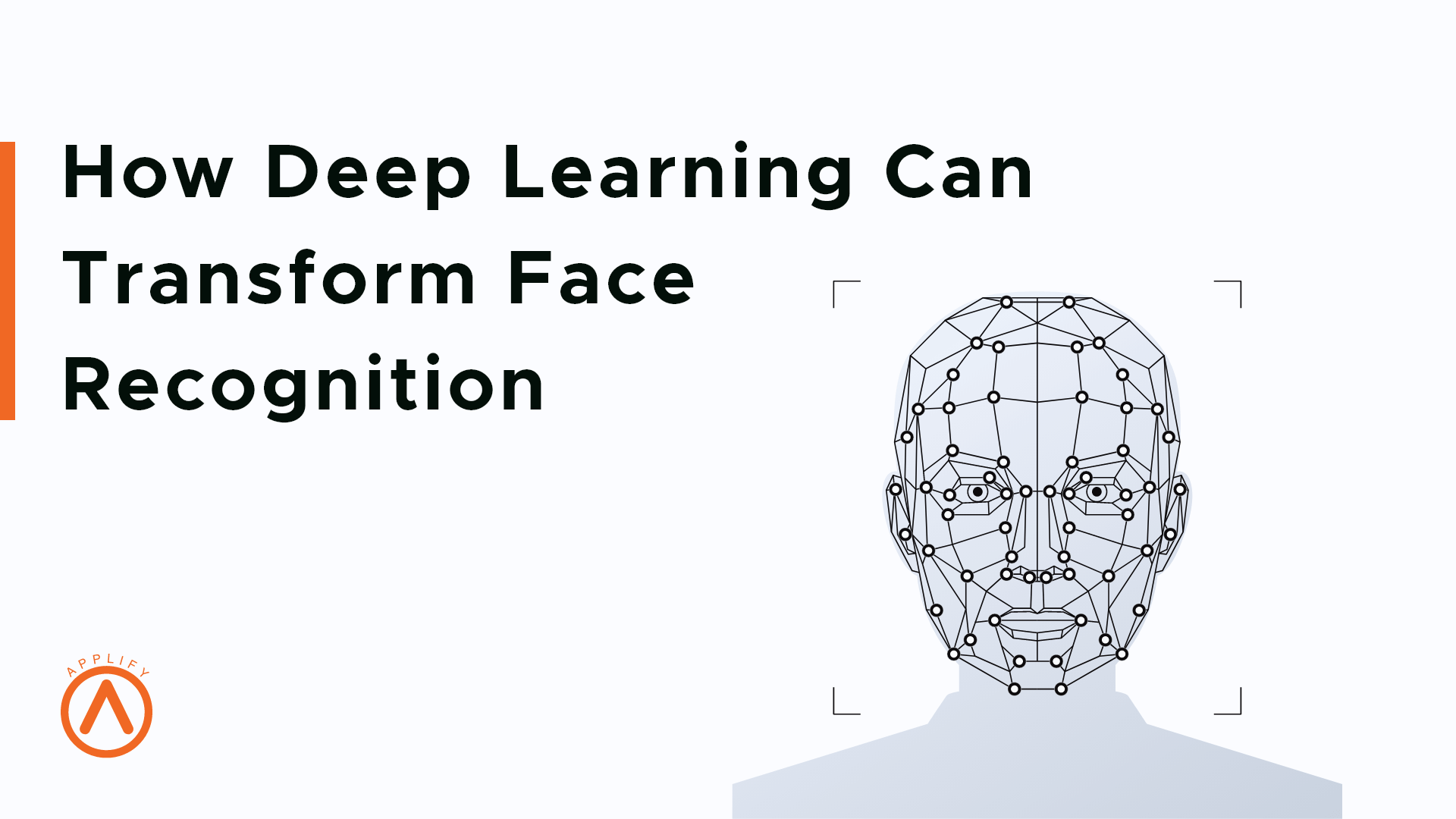If you are planning a full-stack web development for your next project, full-stack web development with React is your best option. In this blog, we will explore the complete guide to full-stack web development using React in 2023. But before that, let’s shed some light on what full stack development actually is.
Definition of Full Stack Web Development
Full stack web development is a comprehensive approach to web development that involves working on all layers of the application stack, including the front-end, back-end, and database layer. Additionally, Full-stack developers are responsible for designing and implementing the entire web application, from the user interface to the server-side logic and database. This approach allows developers to build scalable and robust web applications that can handle large volumes of traffic and complex workflows.
Why Use React for Full Stack Web Development in 2023?
React is one of the popular front-end app development languages. It has gained a lot of popularity in recent years. It allows developers to build complex user interfaces using reusable components and a declarative programming model. Full-stack web development with React is a popular choice because it can be easily integrated with other back-end technologies, making it an ideal choice for building modern, scalable web applications.
In 2023, React is expected to continue its growth and popularity, as more and more developers adopt this technology for building web applications. As a result, learning React for full-stack web development with React is a valuable skill that can help developers stay competitive in the job market.
Read our blog on React Native vs Kotlin to get a better understanding of popular frameworks.
Basics of Full Stack Web Development
Full stack web development with React is a comprehensive approach that involves building both the front-end and back-end development.
1. Introduction to Front-End, Back-End, and Database Development
The front end of a web application refers to the part of the application that is visible to the user. It includes the user interface, which is responsible for rendering the application in the user’s browser. The back end, on the other hand, refers to the part of the application that is responsible for processing data and logic. It includes the server-side code that handles requests from the front end and interacts with the database. The database is where the application stores and retrieves data.
2. Overview of Server-Side and Client-Side Programming Languages
To build a full-stack web application with React, developers need to use both server-side and client-side programming languages. Some popular server-side programming languages include Node.js, Python, and Ruby, while some popular client-side programming languages include JavaScript, HTML, and CSS.
3. Understanding the MVC Architecture
The Model-View-Controller (MVC) architecture is a design pattern commonly used in web application development. It divides the application into three interconnected components: the model, the view, and the controller. Moreover, the model represents the data and business logic of the application, the view represents the user interface, and the controller mediates between the two. By separating the application into these components, the MVC architecture allows for better organization and easier maintenance of the code.
Building a React Front-End
React is a popular JavaScript library used for building user interfaces. In this section, we will discuss how to build a front end using React.
Discover our ultimate guide on how to create a react native app. Learn the Best Practices, tips, and tricks to kickstart your development journey.
1. Setting up a development environment
Before we start building a React front-end, we need to set up a development environment. This involves installing Node.js, a JavaScript runtime, and a code editor like Visual Studio Code. Moreover, we can use Node Package Manager (npm) to install the required dependencies.
2. Creating a new React project with create-react-app
Next, we can create a new React project using create-react-app, a tool that sets up a basic React application with all the necessary dependencies and configurations. Similarly, We can use the command npx create-react-app my-app to create a new React project called my-app.
To have a deep understanding of different digital projects read our guide on web vs mobile app development.
3. Understanding React components, props, and state
React is based on the concept of components, which are reusable building blocks of a user interface. We can create a component using JavaScript functions or classes. As a result, components can receive data as props, which are similar to function arguments, and can use the state to store and manage their own data.
4. Using React Router for client-side routing
React Router is a library that allows us to implement client-side routing in our React application. As a result, we can create different pages or views for different URLs without actually reloading the page. We can use React Router to define routes and render components based on the current URL.
5. Adding styling with CSS and/or Sass
Finally, we can add styling to our React components using CSS or Sass. We can use CSS modules to scope our styles to individual components or use a global stylesheet. On the other hand, we can use CSS-in-JS library-like styled components to write our styles in JavaScript.
Integrating Front-End and Back-End with API calls

Once we have built the front-end and back-end separately, we need to integrate them so that they can communicate with each other. This can be done using API calls.
1. Making API calls from the front end using Axios
Axios is a popular JavaScript library used for making HTTP requests from the front-end to the back-end API. We can use Axios to make GET, POST, PUT, and DELETE requests to the API. We can also pass data and headers with the requests.
2. Handling API responses with Promises
When we make an API call, the response from the back-end API is typically in the form of a Promise object. Promises allow us to handle asynchronous operations in JavaScript. We can use the then and catch methods of a Promise to handle successful and error responses respectively.
3. CRUD operations with the back-end API
Once we have set up API calls from the front end using Axios, we can perform CRUD (Create, Read, Update, Delete) operations with the back-end API. We can use the appropriate HTTP methods and endpoints to perform these operations. For example, we can use a POST request to create a new record, a GET request to retrieve records, a PUT request to update a record, and a DELETE request to delete a record.
4. Deployment and Hosting with React
The next phase of full-stack web development with React is to deploy it to a production-ready environment so that it can be accessed by users.
5. Configuring a production-ready environment
To ensure that our React application performs well in a production environment, we need to configure it for production. In short, this involves creating a production build of the application, which removes development-specific code and optimizes the code for performance. We also need to configure the server to serve the production build of the application and handle any security considerations, such as HTTPS.
6. Deployment to Heroku or AWS Elastic Beanstalk
Heroku and AWS Elastic Beanstalk are popular platforms for deploying and hosting web applications. Both platforms offer easy deployment workflows and scalability options. To deploy our React application to one of these platforms, we need to create a deployment package that includes the production build of the application and any necessary configuration files. We can then use the platform’s deployment tools to deploy the package to a server.
7. Continuous Integration and Deployment with GitHub Actions
Continuous integration and deployment (CI/CD) is a development practice that involves automating the process of building, testing, and deploying applications. Therefore, GitHub Actions is a popular tool for implementing CI/CD workflows. We can use GitHub Actions to automatically build and deploy our React application whenever changes are made to the code. This ensures that the application is always up to date and that any issues are caught early in the development process.
Best Practices for Developing a React Application
In this section, we will discuss the best practices for developing a React application. Since these practices include code organization and file structure, writing clean and maintainable code, and testing with Jest and Supertest.
1. Code organization and file structure
To make our React application easy to navigate and maintain, we need to follow a consistent file structure and organization. Hence, this involves separating our code into logical modules and components and keeping related files together in a directory structure. We can use tools like the create-react-app CLI to generate a basic file structure for our application, and then customize it to fit our needs.
Looking for professional assistance? Hire app developers in Singapore to build your dream app today!”
2. Writing clean and maintainable code
Writing clean and maintainable code is important for ensuring that our React application is easy to understand and modify. This involves following coding best practices like using descriptive variable and function names, commenting on our code, and following a consistent coding style. We can use tools like ESLint to enforce coding standards and catch potential issues early in the development process.
3. Testing with Jest and Supertest
Testing is an important part of the development process and helps ensure that our React application is working as expected. Jest is a popular testing framework for React applications and can be used to test individual components and functionality. On the other hand, Supertest is a library that can be used to test the API endpoints of our back-end server. Writing tests for our application can catch bugs early in the development process and make it easier to maintain the application over time.
Conclusion
We hope that this guide successfully provided a comprehensive overview of the key concepts and practices necessary for high-quality full-stack web development with React. Moreover, with the knowledge gained from this guide and additional resources, you can lead a successful full-stack web development with React and build robust, scalable web applications.









